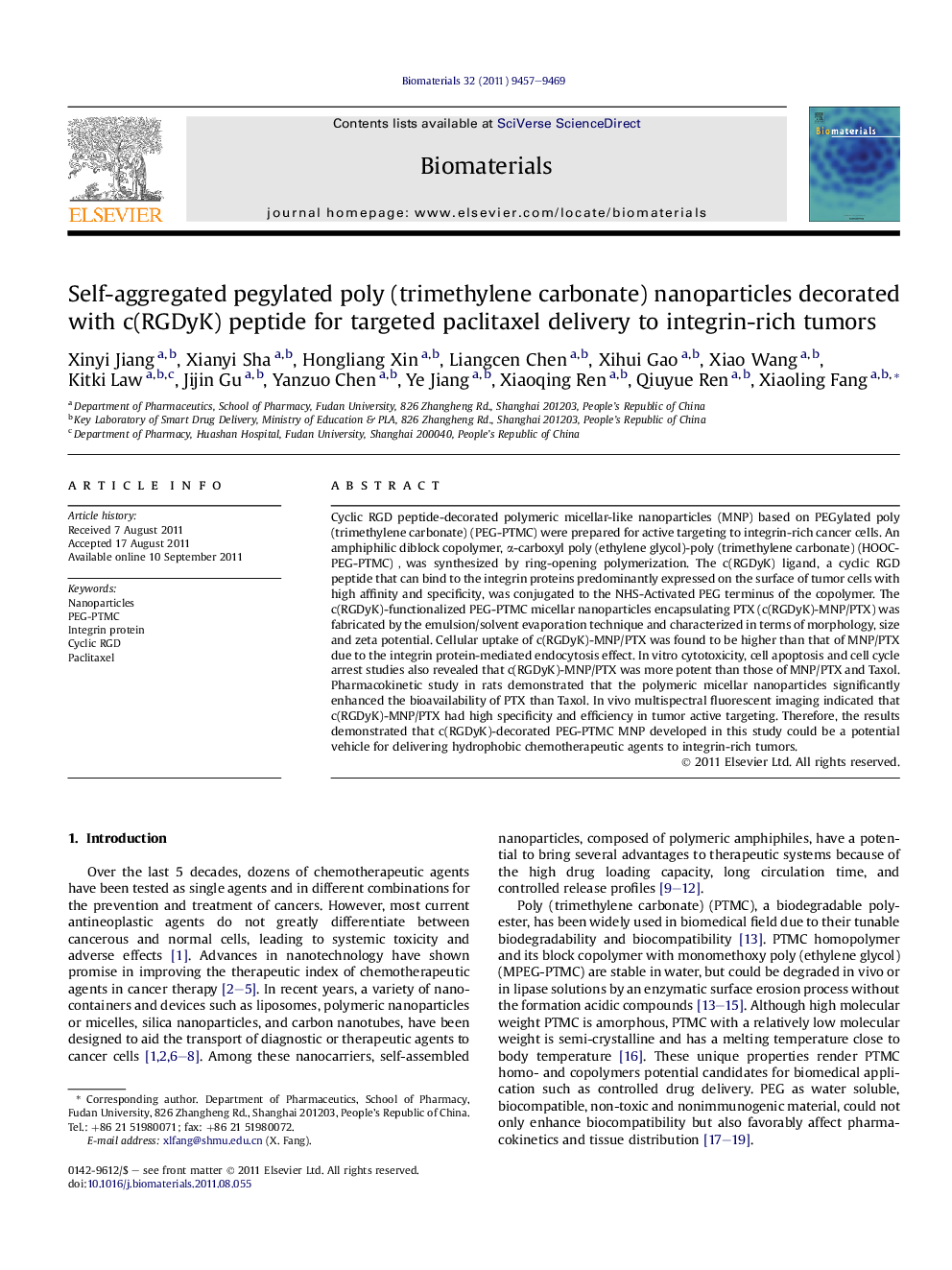| Article ID | Journal | Published Year | Pages | File Type |
|---|---|---|---|---|
| 7898 | Biomaterials | 2011 | 13 Pages |
Cyclic RGD peptide-decorated polymeric micellar-like nanoparticles (MNP) based on PEGylated poly (trimethylene carbonate) (PEG-PTMC) were prepared for active targeting to integrin-rich cancer cells. An amphiphilic diblock copolymer, α-carboxyl poly (ethylene glycol)-poly (trimethylene carbonate) (HOOC-PEG-PTMC),was synthesized by ring-opening polymerization. The c(RGDyK) ligand, a cyclic RGD peptide that can bind to the integrin proteins predominantly expressed on the surface of tumor cells with high affinity and specificity, was conjugated to the NHS-Activated PEG terminus of the copolymer. The c(RGDyK)-functionalized PEG-PTMC micellar nanoparticles encapsulating PTX (c(RGDyK)-MNP/PTX) was fabricated by the emulsion/solvent evaporation technique and characterized in terms of morphology, size and zeta potential. Cellular uptake of c(RGDyK)-MNP/PTX was found to be higher than that of MNP/PTX due to the integrin protein-mediated endocytosis effect. In vitro cytotoxicity, cell apoptosis and cell cycle arrest studies also revealed that c(RGDyK)-MNP/PTX was more potent than those of MNP/PTX and Taxol. Pharmacokinetic study in rats demonstrated that the polymeric micellar nanoparticles significantly enhanced the bioavailability of PTX than Taxol. In vivo multispectral fluorescent imaging indicated that c(RGDyK)-MNP/PTX had high specificity and efficiency in tumor active targeting. Therefore, the results demonstrated that c(RGDyK)-decorated PEG-PTMC MNP developed in this study could be a potential vehicle for delivering hydrophobic chemotherapeutic agents to integrin-rich tumors.
